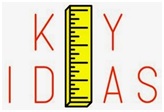|
 |
|
 |
|
|
||
Edward de Bono, Lateral Thinking (1970)
Maltese expert in creativity based in Britain (pictured right) who coined the term “lateral thinking” in this book.
See also... Edward de Bono in the Management Gurus section.
Book summary
What is lateral thinking? The deliberate generation of new ideas and the abandonment of old ones.
Why is it important? It is vital to creativity.
How is it achieved? 1. Choosing attention areas (the problems) and entry points (the first area of attention) For example
2. Challenging assumptions, ideas and clichés You do this by looking at a problem and asking:
3. Identifying key ideas and crucial factors For example, air travel:
4. Using analogies Using comparable situations to solve a problem For example, using a hobby like stamp collecting to improve administration.
5. Fractionation Dividing a problem into different parts. For example, transport by bus can be divided into:
6. The reversal method Reversing the situation. For example:
7. Provocation (“po”) This provokes new ways of thinking by:
Key quotes on creativity The most basic principle of lateral thinking is that any particular way of looking at things is only one from among any other possible ways. The only available method for changing ideas is conflict. Lateral thinking is provocative. Nothing is sacred.
|
|
|
||
|
|
||
| Copyright © wisdomtowin.com 2025 All Rights Reserved | ||
|









